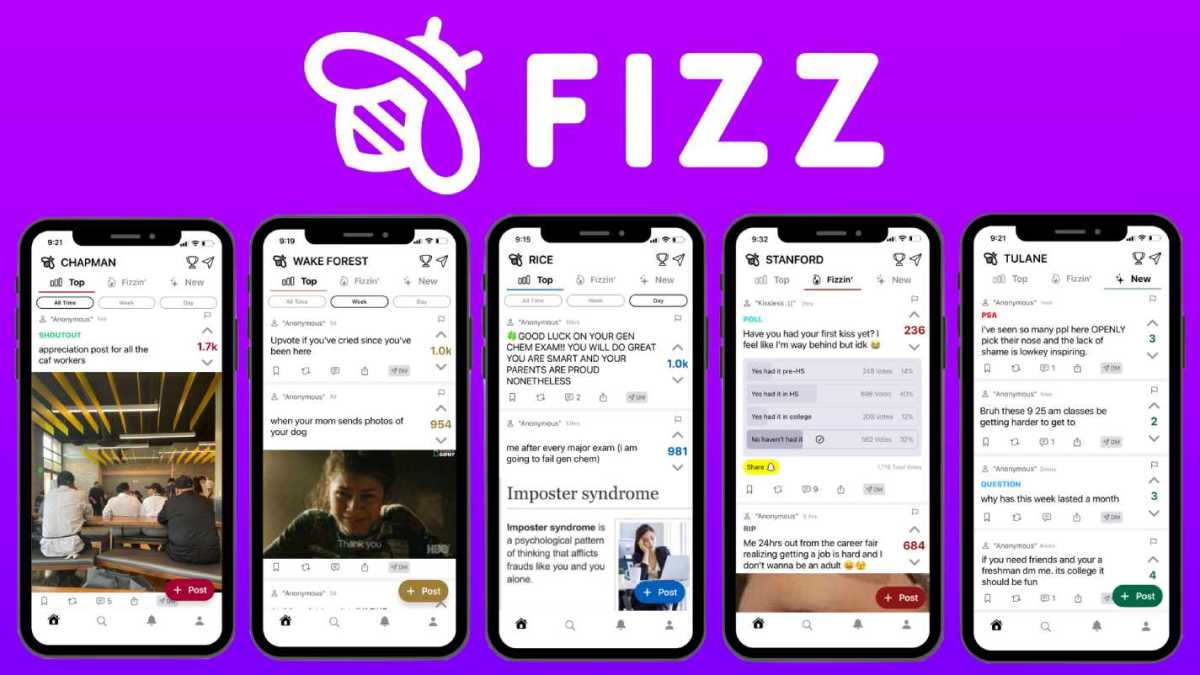All-in-One AI Chatbot Features I Can’t Live Without
Why I Needed an All-in-One AI Chatbot I’ve tried dozens of specialized tools for writing copy, analyzing data, generating images, and handling customer support. Switching tabs, logging into separate apps, and paying multiple subscriptions was draining my energy and my budget. When I discovered this All-in-One AI Chatbot, I was skeptical. Could a single platform really replace my entire toolkit? After several months of daily use, I can confidently say it does and then some. Here’s my honest, first-person take on the highs and lows of this ultimate productivity booster. Pricing and Value Abacus doesn’t break the bank. The ChatLLM Teams plan starts at $10 per user per month, and you get your first month free to kick the tires. That includes: Unlimited access to premium LLMs like GPT-4.1 and Sonnet-3.7 20,000 monthly credits that roll over if unused Unlimited use of efficient models (GPT-4.1-Mini, Gemini 2.0 Flash, DeepSeek R1, Llama 4) When I needed more power, I upgraded to Pro for an extra $10 per user per month, so $20 total. For that, I unlocked unrestricted DeepAgent tasks and 5,000 bonus credits. At $20 a month, it’s still more affordable than juggling three or four separate subscriptions. My Top 10 Abacus AI Features Multi-Modal Marvel I love that Abacus’ ChatLLM handles text, images, code, voice clips, and even video. I can upload a product photo and ask for a marketing blurb, then jump straight into code generation for my website, all in one chat. On the downside, large image analyses can lag if my Wi-Fi is slow. Still, it’s a far cry from opening separate design, code, and chat tools. Model Powerhouse Having GPT-4.1, GPT-4o, Sonnet-3.7, Sonnet-3.5, plus minis like GPT-4.1-Mini, Gemini 2.0 Flash, DeepSeek R1, and Llama 4 in one package is incredible. I pick the model that suits each task—creativity, speed, or deep technical analysis—without worrying about hidden limits. My only gripe is that the sheer choice can feel overwhelming at first. But once I found my favorites, switching became second nature. Rock-Solid Security As someone in a regulated industry, I needed enterprise-grade protections. Abacus delivers single sign-on, role-based access, end-to-end encryption, and even on-premises deployment. I feel secure sharing financial data and customer records. The catch? Setting up the on-prem environment took coordination with our IT team and a couple of support tickets. After that, though, it’s been rock solid. Seamless Integrations Connecting to SQL and NoSQL databases, S3, Google Cloud Storage, Salesforce, Google Workspace, Microsoft Office, Slack, and Teams was smoother than I expected. I built custom workflows with RESTful APIs in Python—my developers thank me every day. Occasionally a connector update causes a brief hiccup, but the Abacus support team usually resolves it within hours. Autonomous DeepAgent DeepAgent is like having a tireless junior developer and analyst rolled into one. I tell it, “Build a customer support ticket summarizer,” and it sets up the app, integrates with our database, and learns on the go. I’ve seen a 50 percent drop in manual ticket routing time. That said, DeepAgent sometimes misinterprets edge-case requirements, so I still double-check its work before going live. Specialized AI Power Tools When I need code help, CodeLLM nails it. AppLLM accelerates prototyping, Vision AI tackles image analysis, and Structured ML forecasts churn with uncanny accuracy. I used these tools to build a personalized recommendation engine in a week. The downside is the learning curve—each specialized tool has its own quirks. A few extra guided tutorials in the dashboard would help new users get up to speed faster. Real-Time Insight Engine Streaming analytics, anomaly detection, live forecasts, and automatic model retraining keep me ahead of market shifts. Last month, an unexpected traffic spike triggered an alert, and I adjusted my ad spend within minutes. Configuring alerts took a bit of trial and error, though. Once they’re tuned, this feature feels like having a vigilant data scientist on call. End-to-End MLOps Factory Data cleaning, feature engineering, model selection, hyperparameter tuning, deployment, and monitoring—Abacus automates it all. I cut my model development cycle in half and freed our data team to focus on strategy. My only wish is a more intuitive UI for hyperparameter tuning; sometimes I dive into advanced settings and feel a little lost without a data science background. Delightful Dual UX I’m a (novice) coder, so I appreciate the API-first interface and code Code Playground. My marketing colleague, less technical, swears by the chat-driven workflow and drag-and-drop dashboard. Switching between interfaces is seamless, but I have noticed the chat context occasionally resets if I leave the window idle too

Why I Needed an All-in-One AI Chatbot
I’ve tried dozens of specialized tools for writing copy, analyzing data, generating images, and handling customer support. Switching tabs, logging into separate apps, and paying multiple subscriptions was draining my energy and my budget.
When I discovered this All-in-One AI Chatbot, I was skeptical. Could a single platform really replace my entire toolkit? After several months of daily use, I can confidently say it does and then some.
Here’s my honest, first-person take on the highs and lows of this ultimate productivity booster.

Pricing and Value
Abacus doesn’t break the bank. The ChatLLM Teams plan starts at $10 per user per month, and you get your first month free to kick the tires. That includes:
- Unlimited access to premium LLMs like GPT-4.1 and Sonnet-3.7
- 20,000 monthly credits that roll over if unused
- Unlimited use of efficient models (GPT-4.1-Mini, Gemini 2.0 Flash, DeepSeek R1, Llama 4)
When I needed more power, I upgraded to Pro for an extra $10 per user per month, so $20 total. For that, I unlocked unrestricted DeepAgent tasks and 5,000 bonus credits.
At $20 a month, it’s still more affordable than juggling three or four separate subscriptions.
My Top 10 Abacus AI Features
Multi-Modal Marvel
I love that Abacus’ ChatLLM handles text, images, code, voice clips, and even video. I can upload a product photo and ask for a marketing blurb, then jump straight into code generation for my website, all in one chat.
On the downside, large image analyses can lag if my Wi-Fi is slow. Still, it’s a far cry from opening separate design, code, and chat tools.
Model Powerhouse
Having GPT-4.1, GPT-4o, Sonnet-3.7, Sonnet-3.5, plus minis like GPT-4.1-Mini, Gemini 2.0 Flash, DeepSeek R1, and Llama 4 in one package is incredible.
I pick the model that suits each task—creativity, speed, or deep technical analysis—without worrying about hidden limits. My only gripe is that the sheer choice can feel overwhelming at first. But once I found my favorites, switching became second nature.
Rock-Solid Security
As someone in a regulated industry, I needed enterprise-grade protections. Abacus delivers single sign-on, role-based access, end-to-end encryption, and even on-premises deployment.
I feel secure sharing financial data and customer records. The catch? Setting up the on-prem environment took coordination with our IT team and a couple of support tickets. After that, though, it’s been rock solid.
Seamless Integrations
Connecting to SQL and NoSQL databases, S3, Google Cloud Storage, Salesforce, Google Workspace, Microsoft Office, Slack, and Teams was smoother than I expected.
I built custom workflows with RESTful APIs in Python—my developers thank me every day. Occasionally a connector update causes a brief hiccup, but the Abacus support team usually resolves it within hours.
Autonomous DeepAgent
DeepAgent is like having a tireless junior developer and analyst rolled into one. I tell it, “Build a customer support ticket summarizer,” and it sets up the app, integrates with our database, and learns on the go.
I’ve seen a 50 percent drop in manual ticket routing time. That said, DeepAgent sometimes misinterprets edge-case requirements, so I still double-check its work before going live.
Specialized AI Power Tools
When I need code help, CodeLLM nails it. AppLLM accelerates prototyping, Vision AI tackles image analysis, and Structured ML forecasts churn with uncanny accuracy. I used these tools to build a personalized recommendation engine in a week.
The downside is the learning curve—each specialized tool has its own quirks. A few extra guided tutorials in the dashboard would help new users get up to speed faster.
Real-Time Insight Engine
Streaming analytics, anomaly detection, live forecasts, and automatic model retraining keep me ahead of market shifts. Last month, an unexpected traffic spike triggered an alert, and I adjusted my ad spend within minutes.
Configuring alerts took a bit of trial and error, though. Once they’re tuned, this feature feels like having a vigilant data scientist on call.
End-to-End MLOps Factory
Data cleaning, feature engineering, model selection, hyperparameter tuning, deployment, and monitoring—Abacus automates it all.
I cut my model development cycle in half and freed our data team to focus on strategy. My only wish is a more intuitive UI for hyperparameter tuning; sometimes I dive into advanced settings and feel a little lost without a data science background.
Delightful Dual UX
I’m a (novice) coder, so I appreciate the API-first interface and code Code Playground. My marketing colleague, less technical, swears by the chat-driven workflow and drag-and-drop dashboard.
Switching between interfaces is seamless, but I have noticed the chat context occasionally resets if I leave the window idle too long. A quick reintroduction solves it, but it can interrupt a train of thought.
Continuous Innovation
Abacus pushes the envelope with open-source releases like Smaug-72B (80.48 percent accuracy) and Giraffe (32K context support). New features roll out monthly, from Gen AI enhancements to expanded Vision AI models.
On rare occasions, a fresh update introduces a minor bug—like a misaligned button or a text display glitch—but the team usually fixes it in the next patch.
The Good and The Bad
Here is my quick pros and cons list after six months of daily use:
The pros:
- Unified platform replaces five separate tools *Flexible pricing—$10 per user per month, first month free
- Powerful mix of premium and unlimited-use models
- Enterprise-grade security and compliance
- Autonomous agents that save 15–75 percent of manual work
- Real-time analytics and continuous model retraining
- Dual UX for technical and non-technical users
- Regular updates and open-source contributions
The cons:
- Initial setup for on-premises deployment can be complex
- Model selection can overwhelm new users
- Large image or video tasks sometimes lag on slow networks
- Specialized tools have a learning curve without guided tutorials
- Chat context resets if left idle for too long
Final Thoughts
Overall, Abacus' All-in-One AI Chatbot has transformed my workflow. It’s powerful, cost-effective, and constantly improving. Yes, there are a few bumps along the way, but none outweigh the daily time savings and productivity gains.
If you’re tired of managing multiple subscriptions and want a single, unstoppable AI assistant, give Abacus a spin.
Sign up for ChatLLM Teams at $10 per user per month (first month free), explore the features, and upgrade to Pro when you’re ready to unleash the full DeepAgent power. You might just find it’s the last AI tool you ever need.










































































































































































![[The AI Show Episode 146]: Rise of “AI-First” Companies, AI Job Disruption, GPT-4o Update Gets Rolled Back, How Big Consulting Firms Use AI, and Meta AI App](https://www.marketingaiinstitute.com/hubfs/ep%20146%20cover.png)
























































































































![[DEALS] The Premium Python Programming PCEP Certification Prep Bundle (67% off) & Other Deals Up To 98% Off – Offers End Soon!](https://www.javacodegeeks.com/wp-content/uploads/2012/12/jcg-logo.jpg)












































































































































_Aleksey_Funtap_Alamy.jpg?width=1280&auto=webp&quality=80&disable=upscale#)
_Sergey_Tarasov_Alamy.jpg?width=1280&auto=webp&quality=80&disable=upscale#)















































































































![Apple Developing New Chips for Smart Glasses, Macs, AI Servers [Report]](https://www.iclarified.com/images/news/97269/97269/97269-640.jpg)
![Apple Shares New Mother's Day Ad: 'A Gift for Mom' [Video]](https://www.iclarified.com/images/news/97267/97267/97267-640.jpg)
![Apple Shares Official Trailer for 'Stick' Starring Owen Wilson [Video]](https://www.iclarified.com/images/news/97264/97264/97264-640.jpg)






































































































